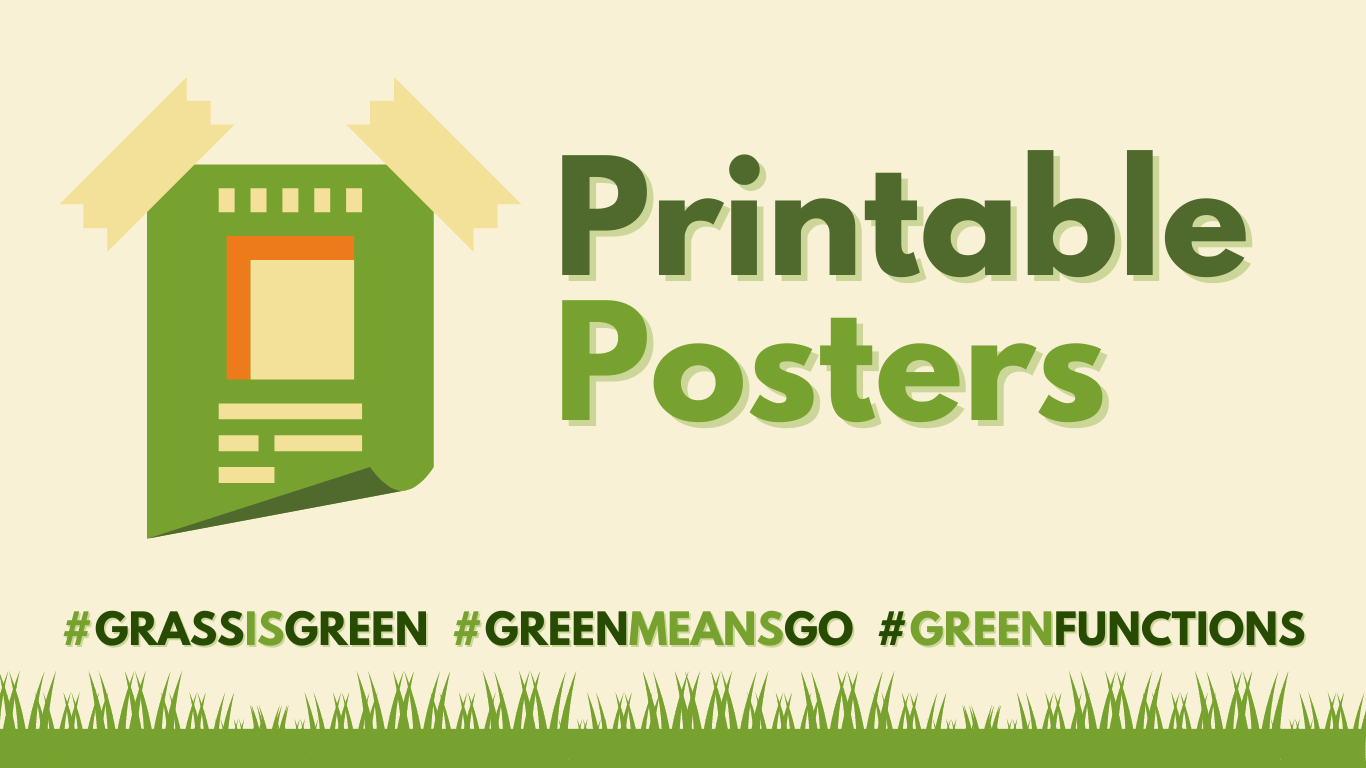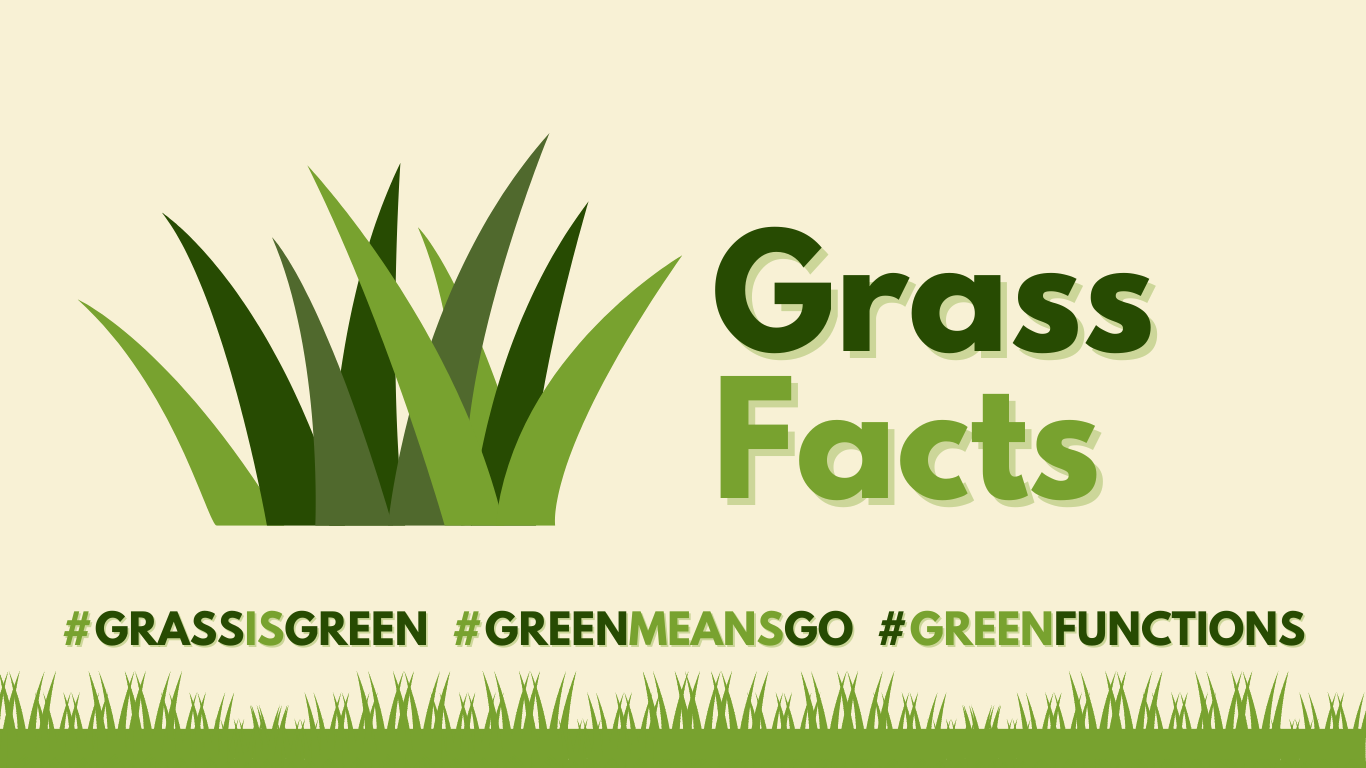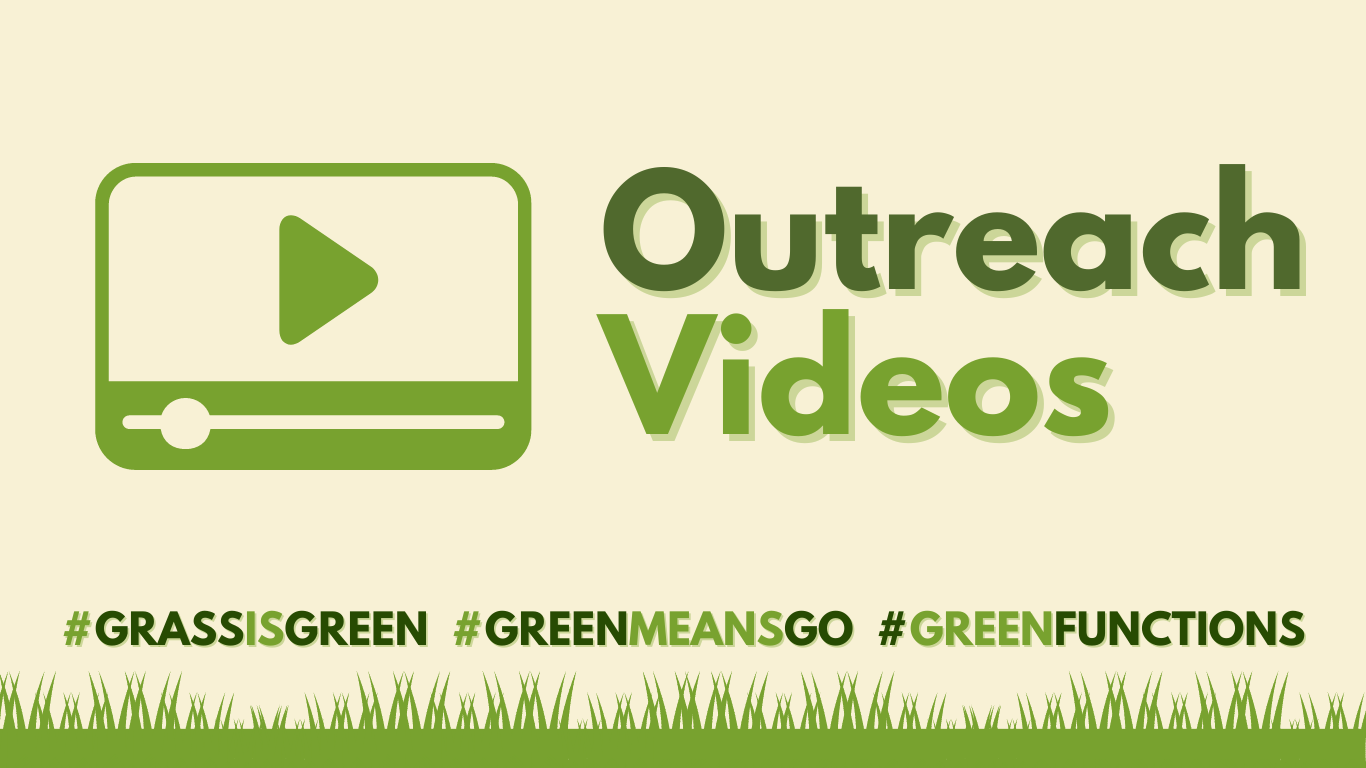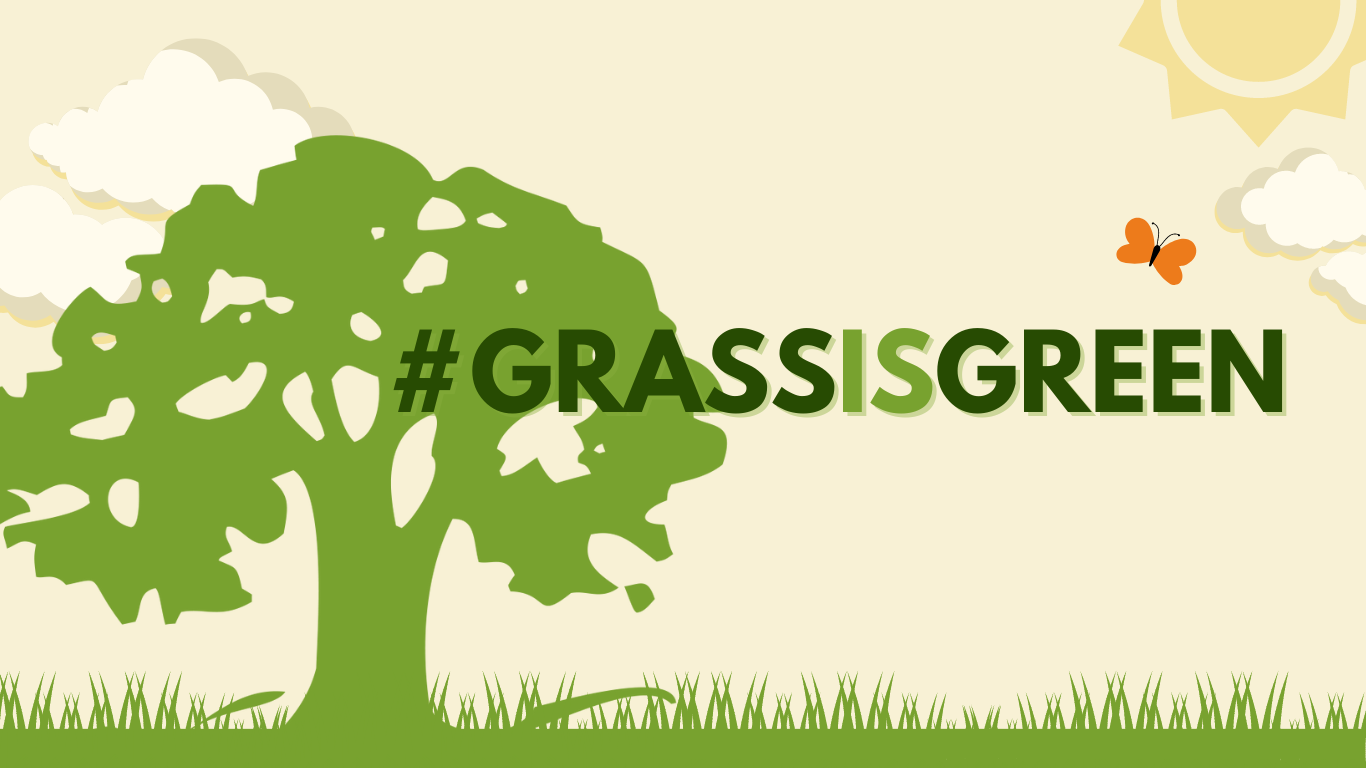
Grass is Green resources
Our mission is to provide science-based information and tools to promote and protect healthy lawns for the benefit of the community.
We aim to help Canadian homeowners and municipalities make informed decisions about lawn and turf management.
Lawn Science is a resource to promote functional green spaces.

Every drop counts
The amount of water your lawn need depends on the time of year, type of grass, and how much traffic through the area.
Watering deep and infrequently is recommended, which encourages deep roots and prevents wasting water. The amount of water you NEED to apply might surprise you. Kentucky bluegrass can survive up to (and beyond) 60 days with no water, due to its ability to go dormant.

Stay sharp!
Mowing is the most basic and the most frequent practice needed to maintain a healthy lawn. The ability to withstand mowing is what makes grasses different from other plants, and it is an essential part of maintaining a high quality lawn. Mowing reduces weeds, prevents the establishment of pests like fleas and ticks, and maintains the functionality of the lawn for play and social events.

Sow what?
There are four main types of grass used for lawns: bluegrasses, ryegrasses, and fescues. Most Canadian sod is Kentucky bluegrass, which is tolerant to drought and cold.
Not all products are created equal, and it’s important to understand what’s in the bag you’re buying. Look for “certified seed” or products that specify which species is in the bag. It can also be helpful to find out the age of the seed, since the germination rate drops significantly over time.
Commonly Asked Questions

Rake, mulch, or leave them be?
Leave the Leaves: Leaves are a source of carbon, and leaving them on the lawn creates habitats for insects to survive over winter.
However, this practice can actually harm your lawn. Let’s find a happy medium between these two extremes.
Step 1) Rake the leaves to evenly distribute them across the entire lawn.
Step 2) Raise your mower’s cutting height to the maximum it can go.
Step 3) Mow the leaves to mulch them into smaller pieces. This may take two or more passes to get the pieces evenly chopped. Shred the leaves until they are about the size of a dime (approx 1.5 cm squared).
If there are patches with excess leaf cover, to the point where you cannot see the grass, then rake to distribute them evenly. If the grass is still smothered, THEN bag them and remove the leaves for compost.
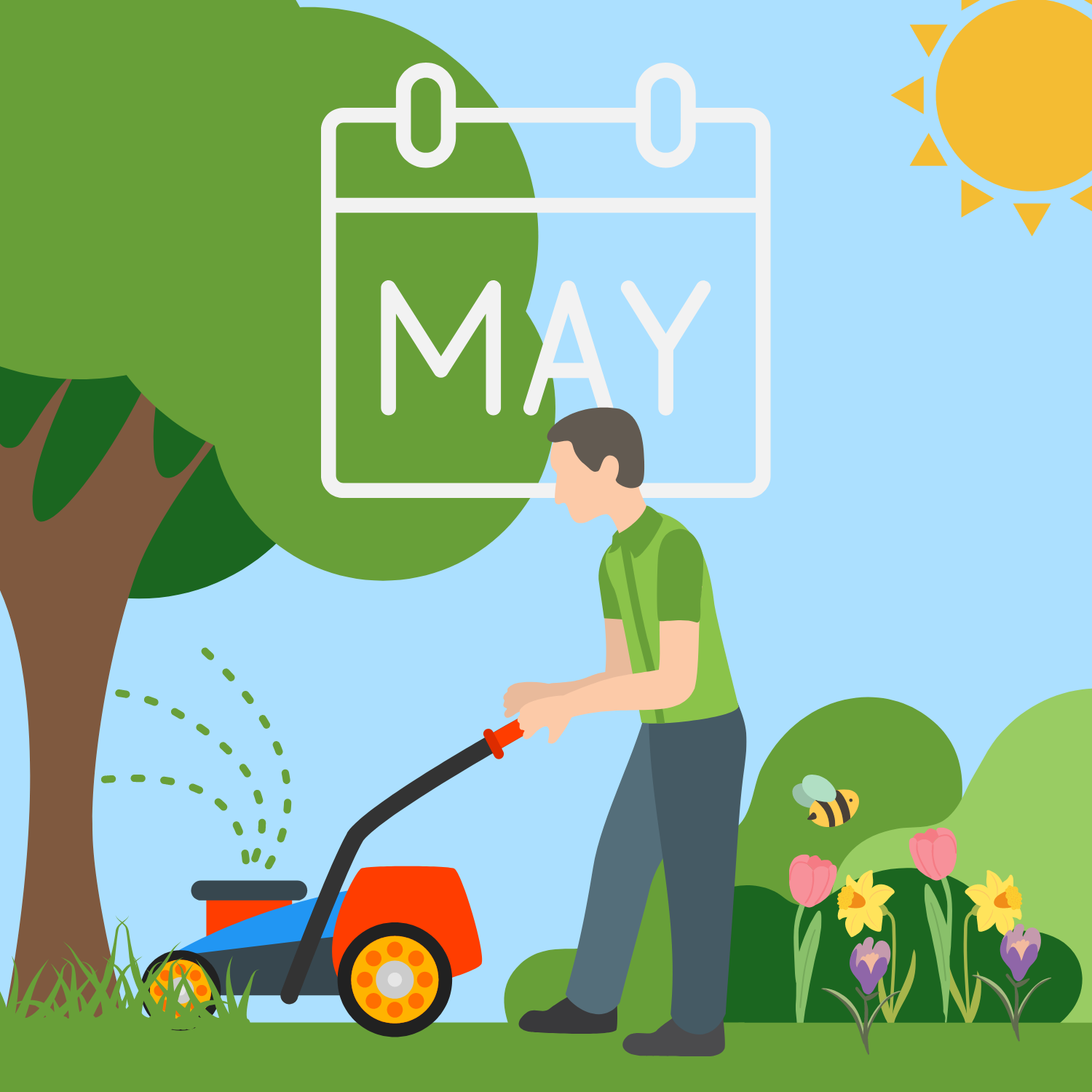
To mow or not to mow in May?
#NoMowMay encourages homeowners to let the grass grow long in the spring. The theory is that flowering weeds will provide an early-season food source for beneficial pollinators.
However, we might see a LOT of growth in May. Long grass creates new problems and it can be difficult to mow. Letting grass grow tall makes the grass thin and patchy, allows for unwanted weeds like thistles to establish, and creates a habitat for fleas, ticks, and mosquitos to live. The damage caused by No Mow May can result in more inputs (fertilizer, seed, herbicide, water) later in the year to help the lawn recover.
Mowing tall turf can also be difficult and lead to an accumulation of too many grass clippings, which can lead to smothering and death of the grass if the clippings are not evenly distributed.
Here are some recommendations on how to support pollinators while keeping your lawn healthy.
- Add flowering plants to your lawn.
(More on that here) - Mow your lawn as needed to keep it healthy. We recommend following the “one third rule” – never cut more than one third of the plant. For instance, if the grass is 3″ tall, you should mow at 2″ or higher.
- Keep your grass mowed at 4″ (10 cm) or less to prevent fleas and ticks.
- Establish naturalized areas in your yard for pollinators to nest year-round. We recommend to fence these off to keep children and pets out.
How to manage insect pests?
Your lawn might be under attack by insects or disease. It’s very important to understand the problem before jumping into action.
Pesticide laws are managed on the federal, provincial, and municipal level.
(More details will be posted soon)

How to manage weeds?
IMPORTANT NOTE: Pesticide use laws differ by province.
Resources for weed control by province are available: (links to be updated in the future)
- British Columbia
- Alberta
- Saskatchewan
- Manitoba
- Ontario
- Quebec
- Newfoundland & Labrador
- Nova Scotia
- New Brunswick & PEI

Do I need to aerate my lawn?
Aeration is a process that removes cores from the lawn to relieve compaction and improve drainage. Aeration tools include spiked shoes, handheld forks, rolling drums, and mechanical corers. The amount of soil these tools displace depends on the depth of the spike/tine and the distance between each spike/tine.
Almost every lawn will benefit from aeration, but lawns rarely NEED it. Lawns with healthy thatch, or under heavy use, or grown on clay soil will benefit from aeration.
More details on aeration from Virginia State University…

What should I do during a drought?
Long story short: prepare for it.
Kentucky bluegrass can withstand up to and beyond 60 days without water, but you will need to tolerate the yellow and crispy appearance. This species goes into a state of dormancy and will revive when water returns. Newer varieties of tall fescue are on the market due to the high tolerance to drought, however this species is notoriously sensitive to winter conditions.
To prepare your lawn for hot and dry summers, you can encourage deep rooting. Watering deep and infrequently will stimulate root growth. Read more on watering here.
Additionally, you can increase the height of cut to encourage water retention and turf health. Read more on mowing here.

How can I fix rodent damage?
Voles will travel under leaves, clipping, and snow, creating a network of tunnels and passageways. Your lawn will heal with time, but you can speed the recovery with some TLC.
Rake the affected area to even out the lumps, and add more topsoil and seed over the damaged areas. Fertilize and water the new seedlings until the new grass has become established.
It’s difficult to prevent vole damage, but we have a few tips to deter these fuzzy pests:
1) Remove bird feeders or keep the ground around them very clean.
2) Remove woodpiles and debris which may be a nesting site for voles.
3) Keep grass trimmed short and prune bushes up from the ground.
4) In small areas, mouse traps can reduce vole populations. Keep these traps away from children and pets.
More tips from University of Minnesota…

How to combat dog patches?
You may notice yellow patches, often surrounded by a darker green ring, appearing wherever your dog has peed. This is caused by the high nitrogen levels in the urine, causing “burn” damage.
You have a few options on hand:
1) Talk to your veterinarian about how to alter your dog’s diet to improve the quality of protein in their diet.
2) Encourage your dog to pee in different areas of the lawn so that one area doesn’t get overly stressed. Another option is to train your dog to pee on an artificial turf “potty patch” or constructed gravel/sand patch.
3) Reseed with “dog patch resistant” grass varieites. Perennial ryegrass is quick-germinating and can help fill dead patches quickly
4) Water it in! By diluting the urine, you will provide your lawn with nitrogen without causing burn.
More tips from Purdue University….

How to install and care for sod?
Sod is an excellent way to establish a lawn. Here are some tips to ensure your investment stays green for life:
1) Measure the lot and purchase more than you need. Adding 5–10% more than your calculated area ensures that you have enough to complete the project.
2) Prepare the surface. Add topsoil and rake until flat. For best results, make sure that the surface is level. Water the bare surface and fill in any puddles with extra soil.
3) In general, it is easier to start along a straight edge. Unroll your first roll and ensure that the edges are firmly pressed down.
4) As you add rows, ensure that the turf edges are pressed tightly together. Try to keep small pieces in the centre of the lawn. Follow a “brick-like” pattern so that the seams are not in line with each other.
5) Water DEEPLY. Check underneath the sod to ensure that the soil is wet. In the first 2–3 years, the lawn will likely need to be watered and fertilized to ensure complete establishment.

What are the alternatives to grass?
Green landscapes around homes and commercial buildings create many benefits including:
- Decreased air temperature
- Reduced flooding
- Improved water recycling
- Reduced noise
- Improved air quality
That being said, ALL plants can offer these benefits. The benefits of grass are that it is very tolerant to wear and tear and can withstand long periods of drought.
Read more about pros and cons of grass alternatives for a lawn …

How can I support biodiversity?
Your lawn doesn’t need to be a monoculture. In fact, you can maximize performance of your lawn year-round by seeding with different species of grasses. Read more about grass seed selection here.
If you would like to incorporate flowering plants into your lawn, we recommend the following species which may be available in Canada and can tolerate mowing:
-
- Crocus
- Snowdrops
- Wild strawberry
- Creeping buttercup
- English daisy
- Clover
- Wild violets
- Thyme
- Speedwell
- Creeping thyme

Should I remove my grass clippings?
No.
Grass clippings are an excellent source of nitrogen for the lawn, and can increase the water-holding capacity of the soil.
If you are seeing large clumps of clippings, or if your mower is designed to be used with a bag, we recommend spreading the clippings evenly across the entire lawn and raking them into the canopy.
Read the study from University of Laval on this topic.

What should I do in spring/fall?
Spring and fall is the best time to manage your lawn. Here are some recommendations from the experts.
Spring
- Wait. This is the hardest part! Wait until your lawn has actively started growing before doing any aggressive management practices.
- Lightly rake to remove fallen debris. Vigorous raking too early in the season can cause damage.
- If you did not apply a fall fertilizer, you may choose to apply a slow-release fertilizer.
- Overseeding, especially in thin or bare spots, is recommended.
- Hand-pull weeds, which is easiest when the soil is moist.
Fall
- Overseed the entire lawn, with a focus on bare and thin spots.
- Aerate if you notice compaction, high thatch, or poor drainage.
- Apply a fall fertilizer
- Rake leaves to evenly distribute them across the lawn and then use a lawnmower to chop/mulch the leaves evenly.
- Stop watering and allow natural rainfall to take over the irrigation.

How to get rid of mushrooms?
Mushrooms in your lawn is a sign of decomposing organic matter, often where trees have been recently removed. Mushrooms will often appear in a circular or ring-like pattern.
Mushroom damage can also appear as rings of denser, darker green grass or rings of yellowed or dead grass.
This infestation of fungus is called Fairy Ring. The treatment of this issue depends on the symptoms:
Dead ring: core aeration is recommended to increase water absorption.
Dark green ring: fertilize with nitrogen and/or iron to hide the symptoms.
Mushroom ring: hand pick (wearing gloves) and dispose of the mushrooms in a compost bin.
More details on Fairy Ring from University of Saskatchewan…

How to hire a lawncare professional?
The Canadian Nursery Landscape Association (CNLA) is a national not-for-profit organization which includes nine provincial associations. We recommend reaching out to certified members in your area when looking to hire a lawncare professional.



